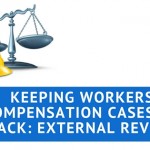Doing More With Less: Positive Cost Containment
Positive cost containment can begin with not paying for down time. Administrative resources dedicated to case and claim processing sit on your books as solid, steady expense while the processing pipeline swings dramatically. Paying overtime when backlogs occur will definitely impact the monthly administrative budgets. A number of other factors also contribute to these swings.




